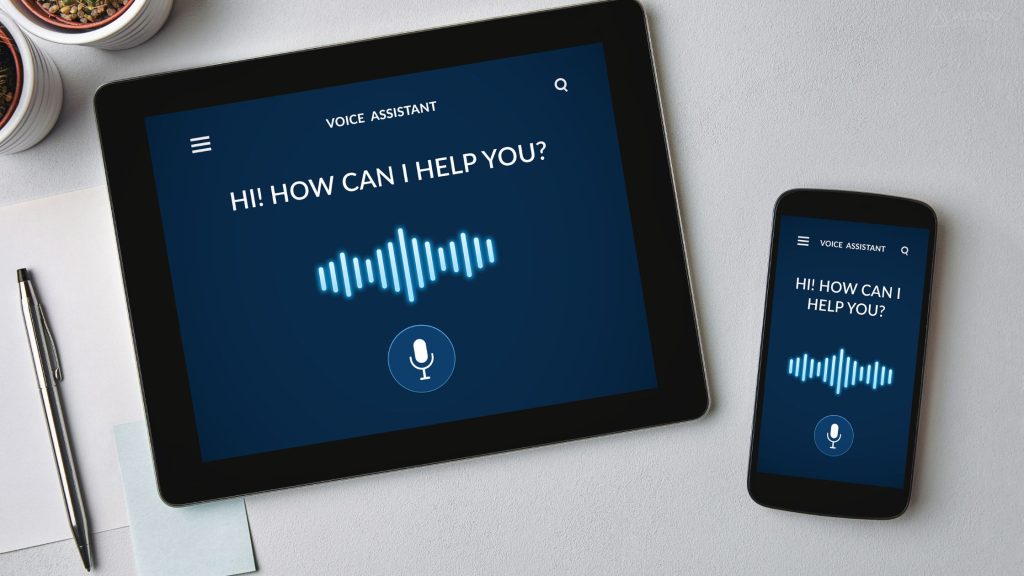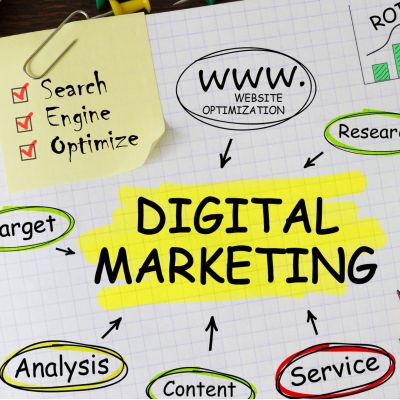10 Digital Marketing Strategies Every Business Needs in 2025
The digital marketing world is evolving at lightning speed. Businesses that succeed in 2025 are the ones that adapt to change, embrace smarter strategies, and stay ahead of shifting consumer behaviors. From AI-powered personalization to sustainability-focused branding, the opportunities for growth and engagement are vast.
But here’s the challenge: the sheer number of tools, platforms, and tactics can feel overwhelming. Where should your business focus? What strategies will generate the most impact without stretching your resources too thin?
In this blog, we’ll explore 10 powerful digital marketing strategies every business should be using in 2025. These aren’t just passing trends—they’re long-term shifts that will define how brands connect with their customers in the years ahead.

1. Embrace AI-Powered Personalization
Today’s consumers want more than generic marketing messages. They expect businesses to understand their needs, anticipate their behaviors, and deliver customized experiences across every touchpoint. This is where artificial intelligence (AI) comes in.
AI-powered personalization allows businesses to deliver relevant content, recommendations, and offers in real time. Think about the last time Netflix suggested a movie you loved or when Amazon recommended a product you didn’t know you needed—these are prime examples of AI at work.
How to implement AI personalization:
- Use AI chatbots to provide 24/7 customer support, instantly answering questions and solving problems.
- Personalize email campaigns based on customer behavior and purchase history.
- Apply predictive analytics to anticipate what your customers are likely to need next.
The businesses that use AI effectively are the ones that create stronger customer relationships and, ultimately, higher conversion rates.

2. Optimize for Voice Search and Conversational AI
“Hey Siri, where’s the best pizza near me?” Voice-driven search queries are now part of everyday life. With smart speakers and AI assistants growing in popularity, voice search optimization is no longer optional—it’s essential.
Unlike traditional searches, voice queries are more conversational and often longer. For example, instead of typing “weather Kingston,” a user might say, “What’s the weather like in Kingston today?” Businesses that adapt their SEO strategies to reflect this shift will be ahead of the curve.
Best practices for voice search optimization:
- Target long-tail, conversational keywords.
- Add FAQ content to your site that mirrors natural language questions.
- Optimize your Google Business Profile to show up in local voice searches.
By tailoring your content for spoken queries, you make it easier for customers to find you when they’re on the go.

3. Prioritize Video and Short-Form Content
Video continues to dominate digital engagement, but in 2025, short-form content is where the real attention lies. Platforms like TikTok, Instagram Reels, and YouTube Shorts thrive because they deliver fast, entertaining, and snackable content.
Audiences are drawn to videos that are authentic and quick to consume. Whether it’s a behind-the-scenes look at your business or a 30-second product demo, short videos humanize your brand and grab attention in crowded feeds.
Ideas to try with video marketing:
- Repurpose blog posts into short video explainers.
- Host live streams to interact with your audience in real time.
- Share behind-the-scenes clips to showcase company culture and authenticity.
Remember, it’s not about producing Hollywood-quality videos—it’s about being real, relatable, and consistent.

4. Invest in Social Commerce
Social media has shifted from a discovery tool to a full-blown shopping destination. Consumers can now browse, shop, and checkout without ever leaving platforms like Instagram, TikTok, or Facebook. This is known as social commerce—and it’s one of the fastest-growing digital marketing strategies.
When businesses sell directly on social platforms, they eliminate friction in the buyer’s journey. A customer can see a product in a video, tap the screen, and purchase instantly.
Action steps for social commerce success:
- Enable in-app shopping features on platforms where your audience is most active.
- Partner with influencers to create shoppable posts.
- Showcase user-generated content to build authenticity and trust.
Social commerce isn’t just convenient—it’s also a way to meet customers where they already spend most of their time.

5. Strengthen Content Marketing with Thought Leadership
In an age of information overload, customers seek out expertise and authenticity. Content marketing that positions your brand as a trusted authority is more important than ever.
Thought leadership isn’t just about writing blog posts. It’s about creating valuable resources that educate, inspire, and solve problems for your audience. This builds credibility and strengthens long-term relationships.
Ways to establish thought leadership:
- Publish in-depth guides, whitepapers, and case studies.
- Host webinars and podcasts with industry experts.
- Share original research and insights that highlight your expertise.
When your business is seen as a knowledge leader, customers naturally turn to you when making purchasing decisions.

6. Leverage Data Privacy and Transparency as a Strength
Trust is a currency in 2025, and how businesses handle customer data is under constant scrutiny. With privacy laws like GDPR and CCPA, transparency is no longer optional—it’s expected.
Consumers want reassurance that their information is safe. Brands that openly communicate their data practices can build loyalty in a climate where trust is often fragile.
Steps to make privacy a strength:
- Clearly state your privacy policies in simple, user-friendly language.
- Allow customers to easily manage their data preferences.
- Publicize your compliance with data protection regulations.
By taking a proactive approach to transparency, you turn a potential concern into a competitive advantage.

7. Harness the Power of Influencer and Micro-Influencer Marketing
Influencer marketing isn’t slowing down—it’s evolving. While mega-influencers with millions of followers still have reach, micro-influencers are gaining ground thanks to their authenticity and highly engaged communities.
People trust recommendations from influencers they see as genuine and relatable. This makes influencer partnerships one of the most effective ways to drive brand awareness and sales in 2025.
Tips for influencer success:
- Partner with influencers who align with your brand values.
- Focus on authentic content, not just polished ads.
- Use influencer collaborations for product launches and campaigns.
When done right, influencer marketing can expand your brand reach while maintaining credibility.

8. Focus on Local SEO and “Near Me” Searches
Local SEO remains a powerful tool, especially as customers continue to use mobile devices for quick, location-based searches. The phrase “near me” is part of millions of searches every day, and businesses that rank high in local results capture that traffic.
Checklist for improving local SEO:
- Keep your Google Business Profile updated with accurate hours, services, and photos.
- Encourage and respond to customer reviews regularly.
- Add location-specific landing pages for each area you serve.
For brick-and-mortar businesses, local SEO is essential for driving real-world traffic. For online businesses, it helps capture geographically targeted audiences.

9. Integrate Sustainability and Social Responsibility
Today’s consumers don’t just care about what you sell—they care about what you stand for. Brands that integrate sustainability and social responsibility into their marketing resonate with values-driven customers.
Highlighting eco-friendly practices or community contributions shows that your business is about more than profits. It’s about creating positive impact.
Ways to showcase commitment:
- Promote eco-friendly packaging and operations.
- Support local charities and community initiatives.
- Share sustainability reports or goals on your website.
When your brand’s values align with your customers’, you build deeper loyalty that goes beyond transactions.

10. Experiment with Augmented Reality (AR) Experiences
Augmented reality (AR) is no longer futuristic—it’s here, and it’s transforming how customers shop and interact with brands. From virtual try-on tools to interactive filters, AR creates engaging experiences that bridge the gap between online and offline.
Imagine letting customers see how a sofa looks in their living room before buying it or trying on sunglasses virtually. These immersive tools build confidence and drive sales.
Ideas for AR marketing:
- Offer virtual try-on features for clothing, accessories, or cosmetics.
- Create AR filters for Instagram and Snapchat to boost engagement.
- Develop interactive product demos for your website.
As AR becomes more accessible, businesses that embrace it will stand out with cutting-edge experiences.

Conclusion
Digital marketing in 2025 is about personalization, innovation, and building trust. From AI-powered personalization to AR-driven experiences, these strategies aren’t just trends—they’re the new foundation of modern marketing.
The key is to start small. Test a few of these strategies, track your results, and refine your approach. By staying agile and committed to innovation, your business can thrive in the fast-paced digital landscape. Contact us at Aliado Marketing Group to get started.
The future of marketing is here—make sure your business is ready.
Categories
Latest Articles
Stay up to date
with news and
educational information
[hubspot type=”form” portal=”5213843″ id=”b19f3e1c-0beb-4946-9d04-2bb47dfa17e0″]











Leave a Comment
You must be logged in to post a comment.